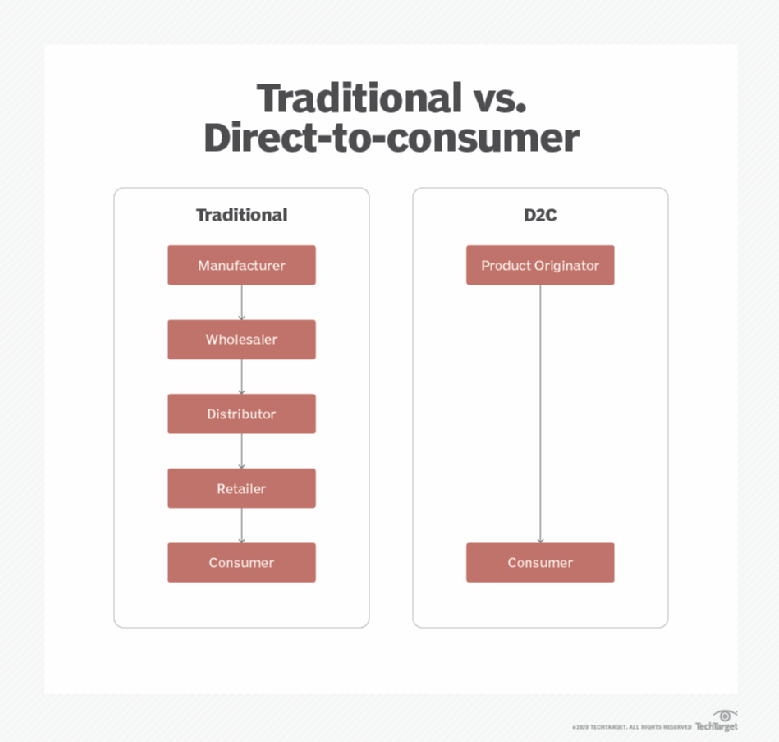The Key Ingredient for DTC Success: Performance Marketing Mastery
May 13, 2021For years, a handful of well-known brands dominated shopping aisles. Large retail chains controlled the consumer landscape, and brands were happy to offload direct sales (and consumer data) in exchange for the prospect of moving product. Following a recipe where branding campaigns were the sole marketing ingredient, the brands that cultivated the most awareness prospered.
Then something happened. DTC disrupters identified outdated distribution channels for consumer products and eliminated cumbersome retail experiences. They took innovative approaches to solving consumer problems and addressing consumer needs through easy and slick experiences.

DTC brands circumvented the big box retailers and sold their products directly to consumers on Amazon’s marketplace and their own ecommerce websites, which also meant that they incurred lower costs. They eschewed traditional awareness building marketing channels like TV, and instead leaned into performance marketing, taking agile, experimental, and highly effective, approaches to their performance marketing programs. With surgical precision, they excelled at lower-funnel tactics and maximizing conversions.
Here we’ll explore how DTC brands unlocked early success using performance marketing channels like Amazon, search, and social.
Amazon: The Great Democratizer
Using homegrown search technology to connect buyers and sellers, Amazon significantly reduced the overhead and many of the barriers to entry that made it difficult to bring new products to market.
For a while, upstart DTC companies enjoyed a great deal of success on Amazon, and were largely left alone. That is until the more established brands noticed eroding market share for many of their highest volume products.
But by then, it was too late. Early DTC adopters on Amazon already controlled most of the major product categories and they had become sophisticated and highly nimble ecommerce and retail media marketers. Eventually, some these legacy brands fought back, hired smart ecommerce teams and took back share. But it was a costly endeavor, and they were playing catch up.
There are pros and cons to selling on Amazon, even for savvy DTC brands. On one hand, Amazon is the largest online marketplace in the world, which bring customers to your products. However, competition is fierce and even successful products can fall prey to copycat sellers. And low pricing is often a leading driver for purchase decisions, which does limit some of the cost savings gained through DTC models.
Embracing Social Media

DTC brands embraced and experimented with social media advertising very early on. There was a massive amount of inventory, and for the first time, advertisers could target specific audience segments at scale.
Advertising on Facebook also demonstrated a radical shift in product and consumer relationships as DTC brands inspired purchases of products that were viewed as an extension of one’s personal beliefs, values, and interests.
Facebook’s acquisition of Instagram opened a new avenue for DTC brands that married Facebook’s centralized audience data with audiences who enjoyed scrolling through photos and images and who were open to discovering new products, as long as they were relevant.
A cadre of niche retailers infused with a social conscience introduced redesigned articles of clothing in established categories using sustainable resources (i.e. Allbirds, Outdoor Voices), donated funds and their products to those in need (i.e. Toms, Bombas), and without Instagram’s reach, targeting capabilities, and overwhelming popularity, it is hard to imagine how any of these innovative brands would have been nearly as successful.
Paid Search & 1P Data
When it comes to Google and paid search, DTC brands have been and still are poised to have a significant advantage over brands who have relinquished control of sales to resellers. And, for DTC brands that can carve out their highest LTV converters, the potential to drive successful performance marketing outcomes goes up exponentially.
With the announcement of “Smart” shopping campaigns, Google is another performance marketing opportunity for DTC brands to excel.
“Smart” shopping products will give brands the opportunity to have their ads shown to audiences who have a high likelihood of being interested in a particular product, service, or experience. Powered by custom algorithms that match brand’s anonymized customer data to historical audience behavior across Google owned properties, this capability creates opportunities across the Google Display Network, YouTube, and Gmail to reach users that have similar profiles to the brand’s audience.
What makes this so compelling for DTC brands, who have always understood the importance of controlling their customer data, is that they have the one key ingredient that actually makes the Google algorithms smart: 1P data.
The Future of DTC Marketing
Over the past several years we’ve witnessed some truly remarkable forces at play. Amazon, Instagram, Facebook, and Google have provided forward thinking DTC companies with opportunities to quickly build brands and rapidly acquire customers.
However, it will be interesting to see how DTC brands market themselves in the future. To sustain long-term growth and success, DTC brands very well may find a need to balance their lower funnel and conversion-focused tactics with more upper funnel strategies that help grow awareness to sustain the brand far into the future.





